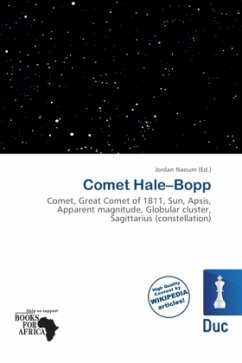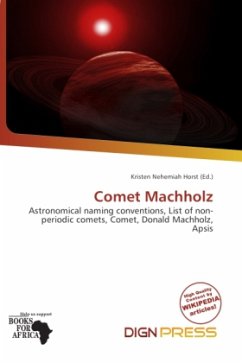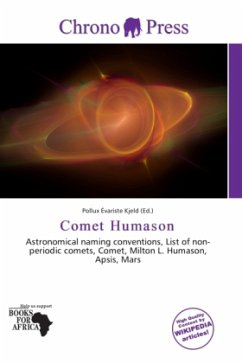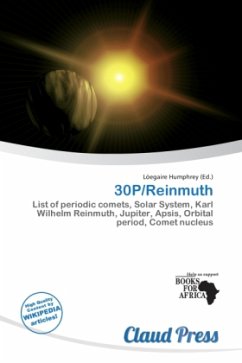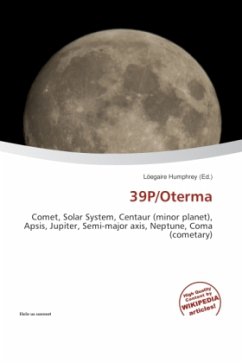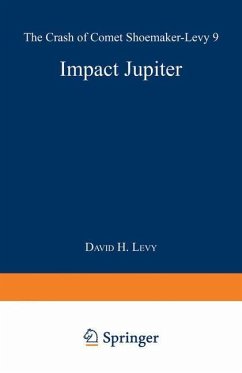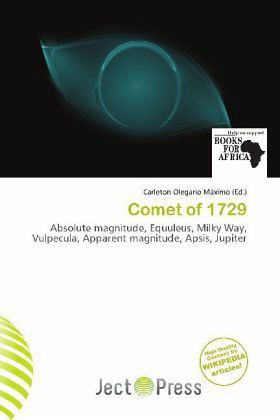
Comet of 1729
Absolute magnitude, Equuleus, Milky Way, Vulpecula, Apparent magnitude, Apsis, Jupiter
Herausgegeben: Olegario Máximo, Carleton
Versandkostenfrei!
Versandfertig in 6-10 Tagen
23,99 €
inkl. MwSt.

PAYBACK Punkte
12 °P sammeln!
Please note that the content of this book primarily consists of articles available from Wikipedia or other free sources online. The Comet of 1729, also known as C/1729 P1 or Comet Sarabat, was a non-periodic comet with an absolute magnitude of 3, the brightest ever observed for a comet; it is therefore considered to be the largest comet ever seen. The comet was discovered in the constellation of Equuleus by Father Nicolas Sarabat, a professor of mathematics, at Nîmes in the early morning of August 1, 1729. Observing with the naked eye, he saw an object resembling a faint, nebulous star: he wa...
Please note that the content of this book primarily consists of articles available from Wikipedia or other free sources online. The Comet of 1729, also known as C/1729 P1 or Comet Sarabat, was a non-periodic comet with an absolute magnitude of 3, the brightest ever observed for a comet; it is therefore considered to be the largest comet ever seen. The comet was discovered in the constellation of Equuleus by Father Nicolas Sarabat, a professor of mathematics, at Nîmes in the early morning of August 1, 1729. Observing with the naked eye, he saw an object resembling a faint, nebulous star: he was at first unsure if it was a comet or part of the Milky Way. Moonlight interfered with Sarabat's observations until August 9, but after recovering the object and attempting to detect its motion without the aid of any measuring instruments, he became convinced that he had found a new comet.



